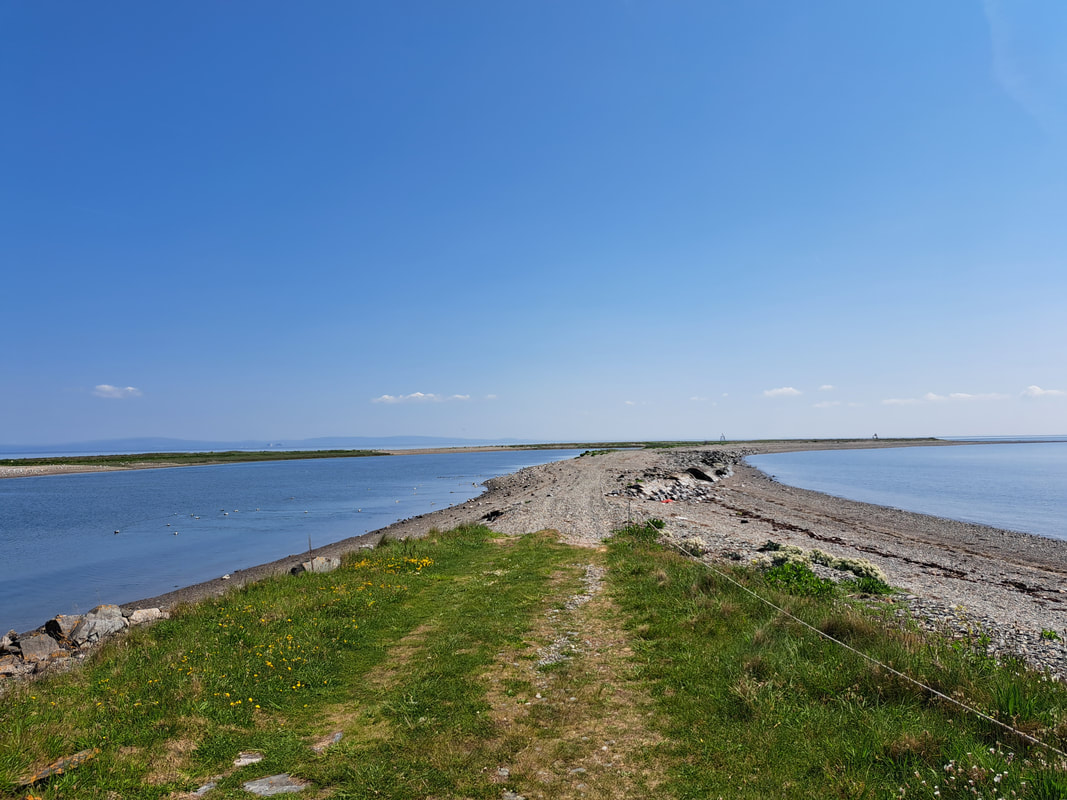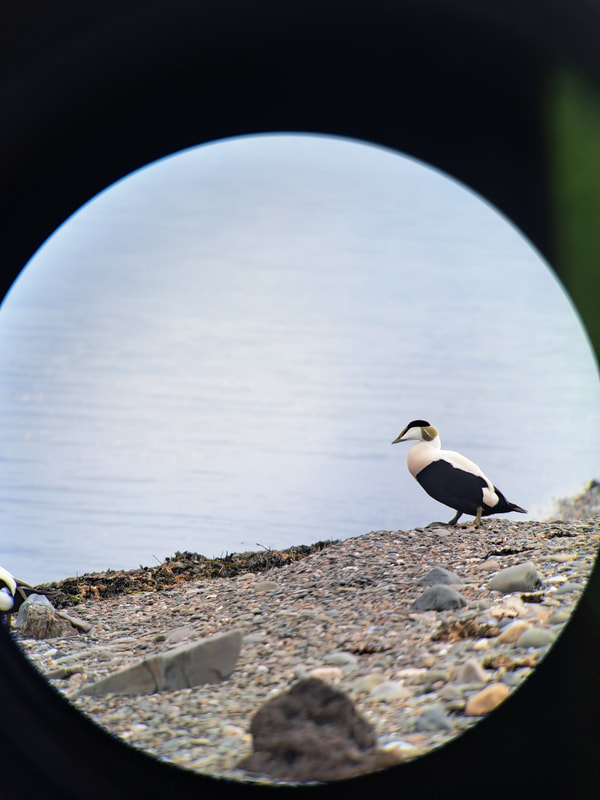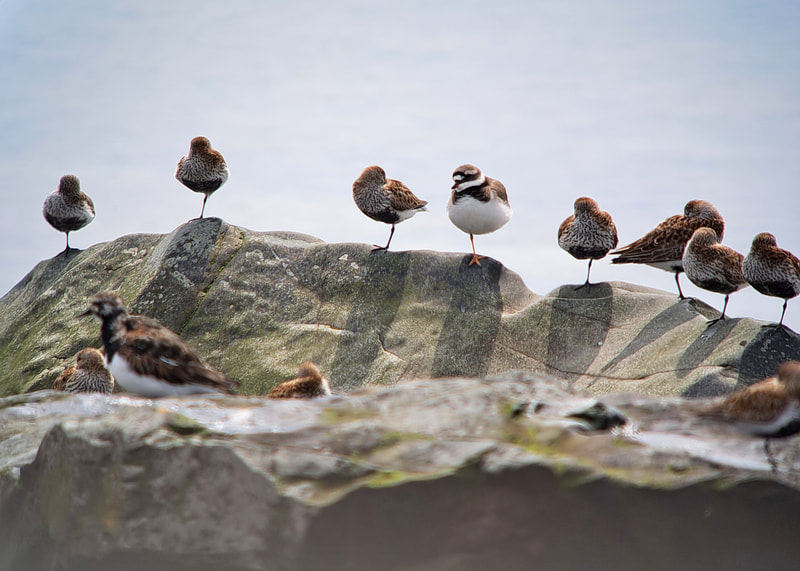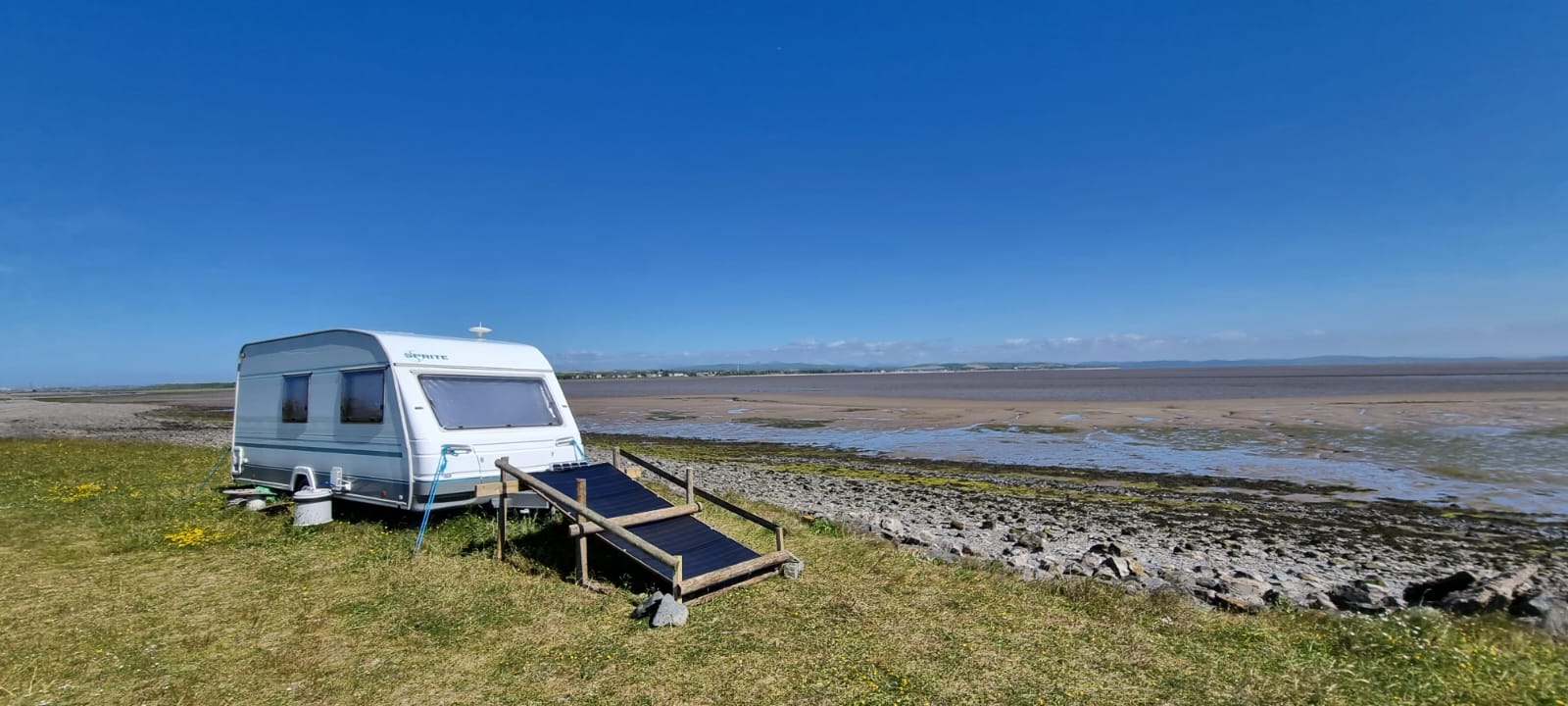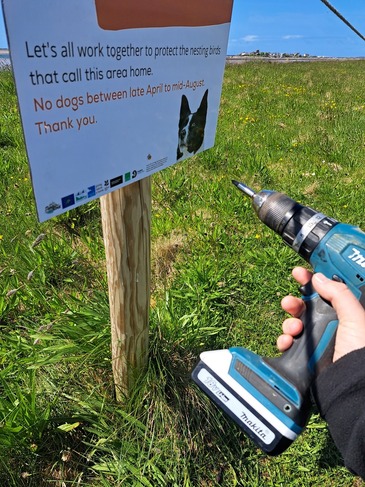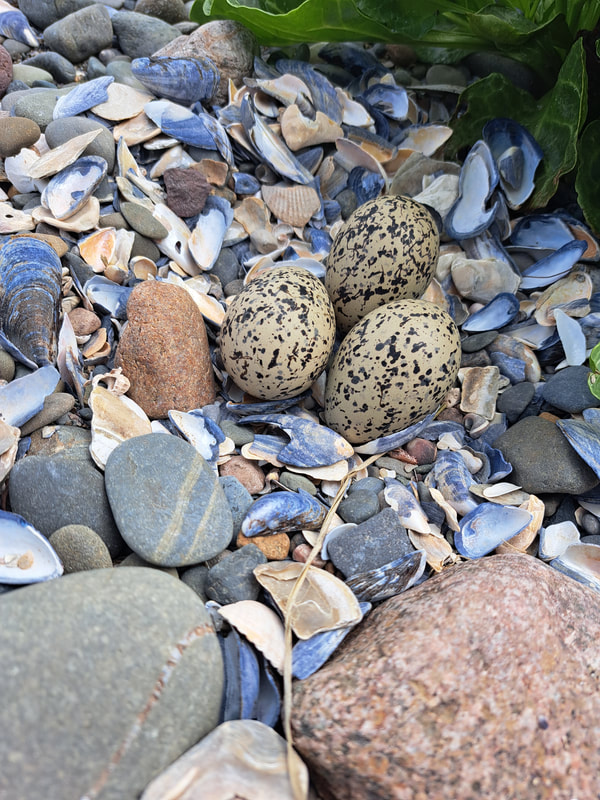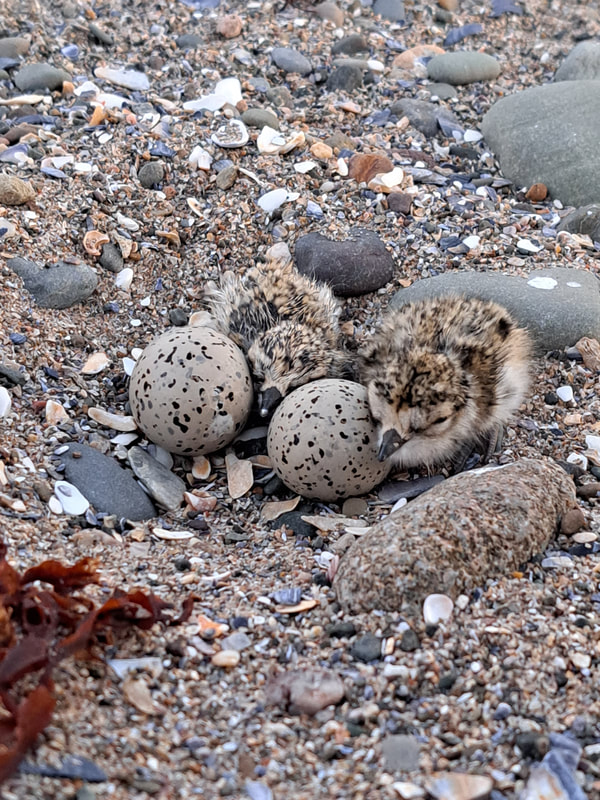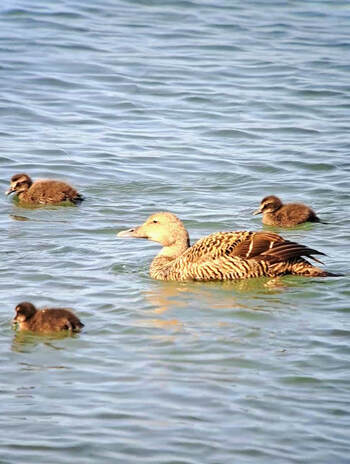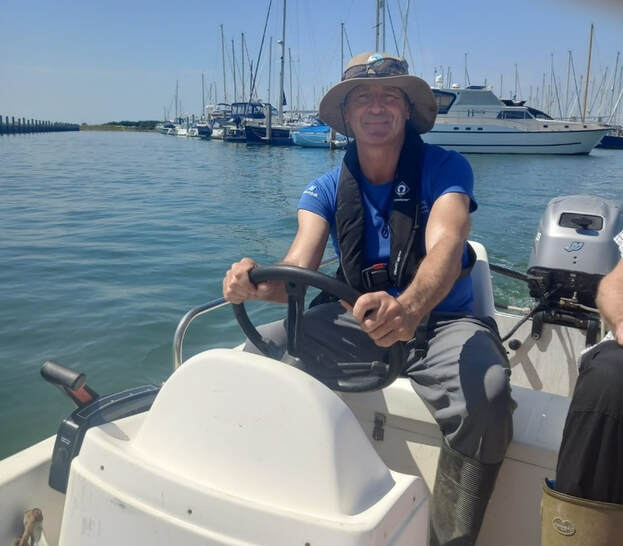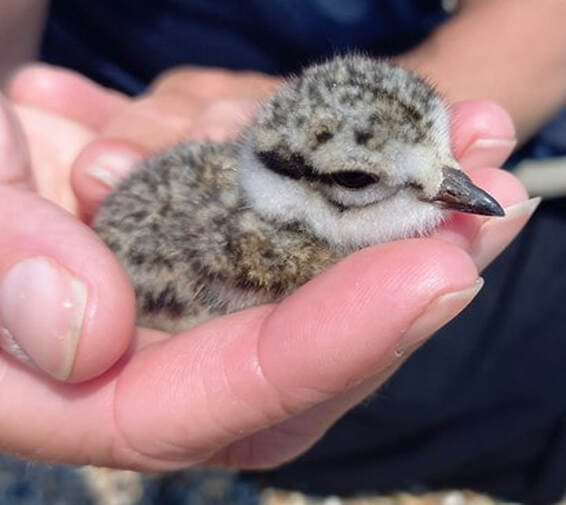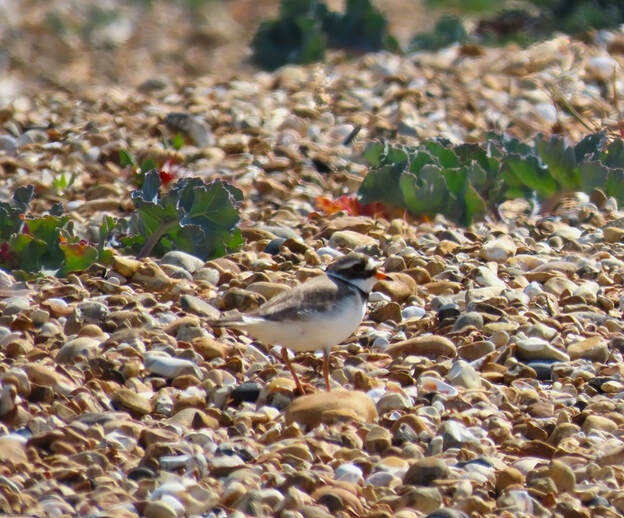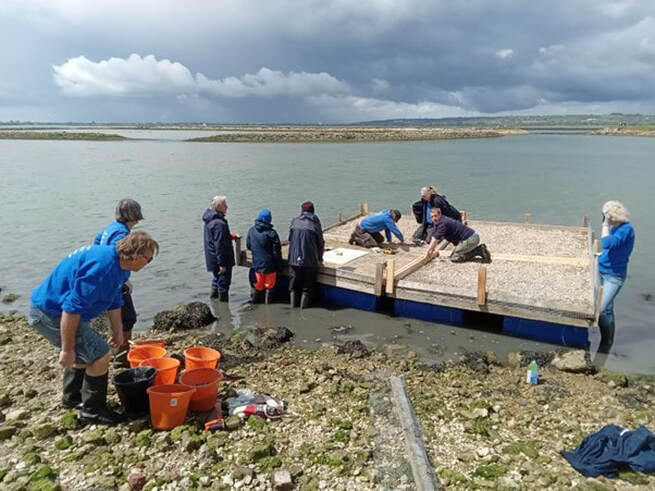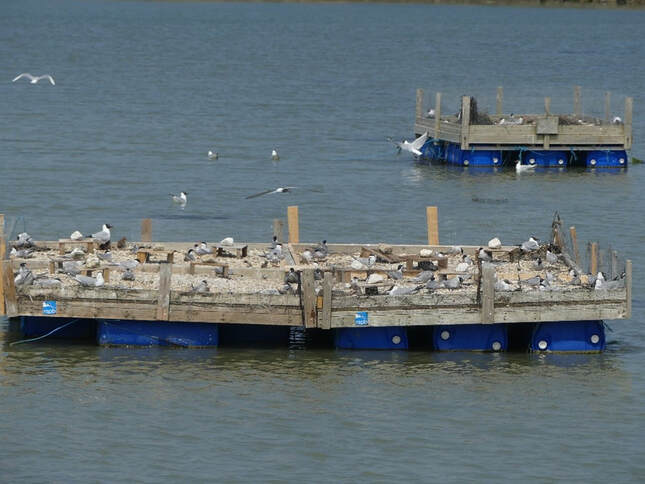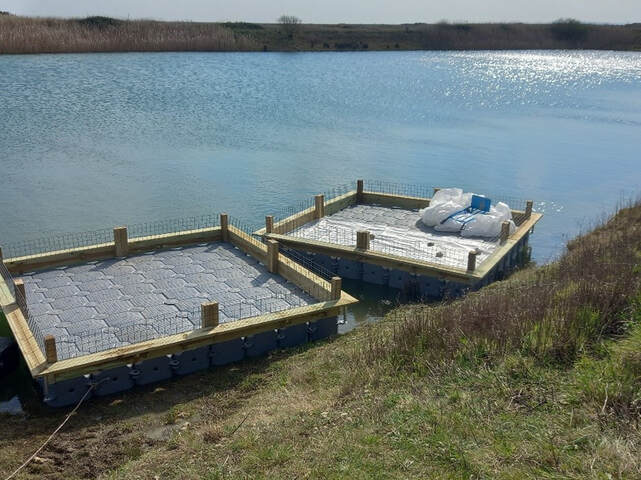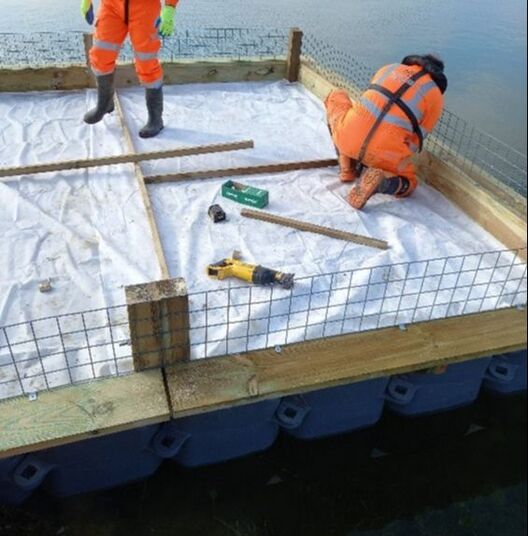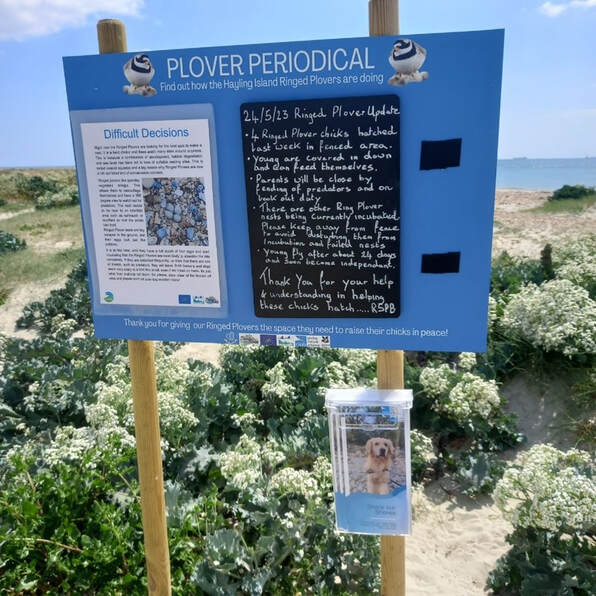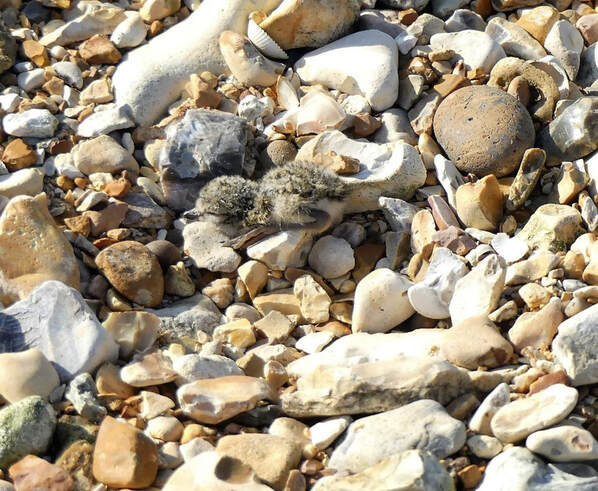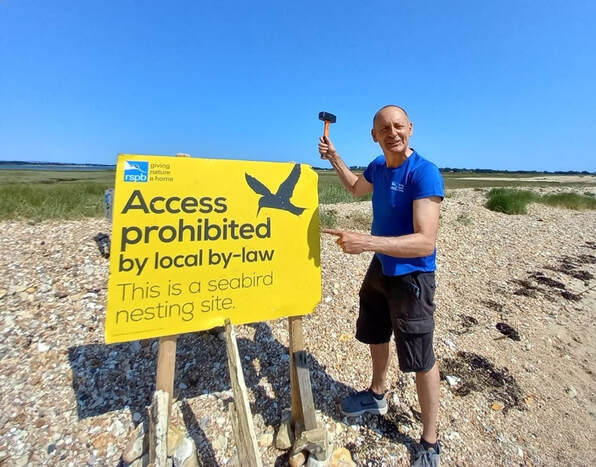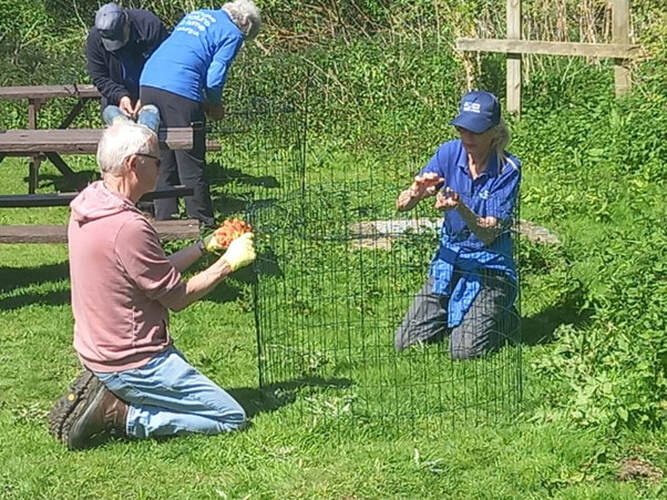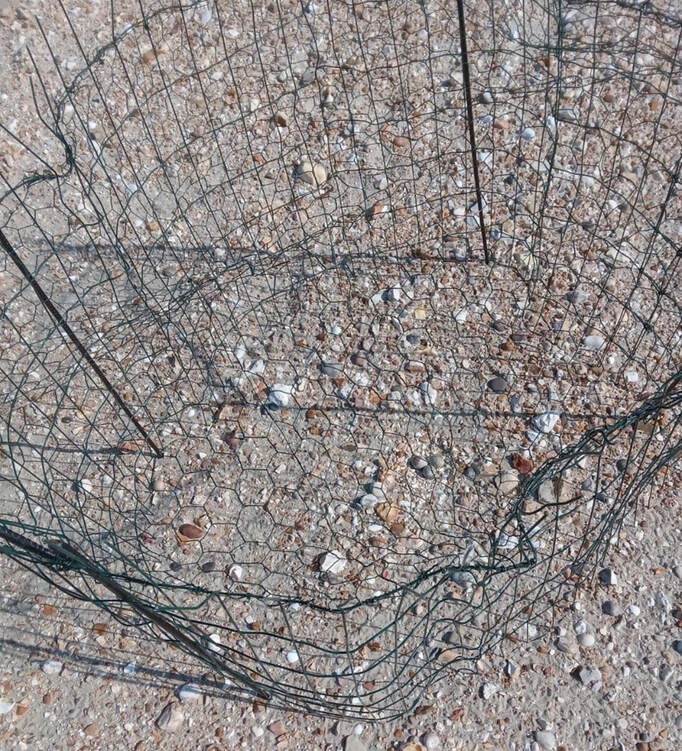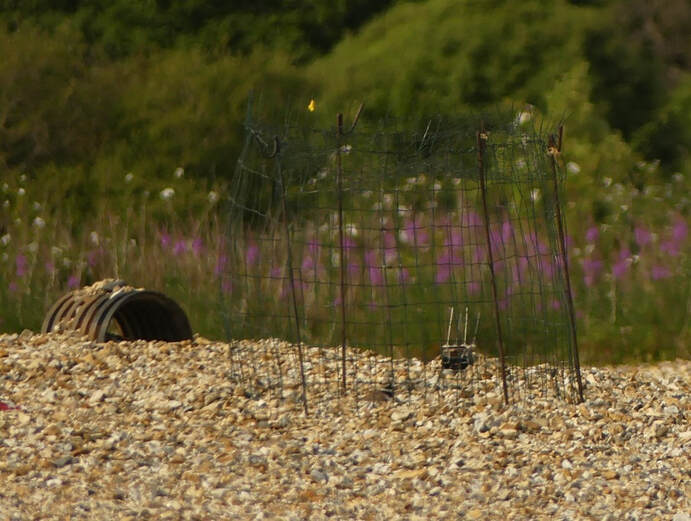|
Blog by Rebekah Watts, Shorebird Warden - South Walney, Cumbria Wildlife Trust Nesting Season Spring has finally arrived and with it, changes are occurring. Flowers are blossoming, days are lengthening and here at South Walney Nature Reserve, birds are carrying sticks and feathers and nests are popping up along our beaches which means that nesting season has begun. Nesting season is the most important time of year. The productivity of our birds is highly important and to assist them during this season, a lot of preparation is undergone during the Autumn and Winter months. Nesting Season Preparations Funding provided by ‘LIFE on the Edge’ (also known as LOTE) helps substantially at South Walney nature reserve when it comes to nesting season. LOTE is a Life Nature project which is lead by the RSPB and National Trust. This project aims to improve the quality of target coastal areas as well as providing recommendations for longer term coastal habitat management and/or creation, with focus on little tern, oystercatcher and ringed plover. LOTE have provided South Walney with equipment for electric fences such as solar panels and energisers, monitoring equipment such as trail cameras and thermal scopes and permanent hybrid fencing. LOTE also provides funding for a seasonal shorebird warden to work with the sole purpose of protecting coastal nesting birds. With the help of LOTE, we at South Walney are able to provide protection to nesting coastal birds throughout the season. Preparation for nesting season begins in late August / early September. At this time, we start checking our permanent fences for damage and repairing them. Debris is removed and the gates are shut to stop livestock from entering. Holes in the fence are repaired, wire is replaced and holes dug by predators into the fenced area are filled in. The area around the electric fence is cut back with a brush cutter to reduce interference with the wires. The inside of the fence is also brush cut to create the correct nesting habitat. The fence is now ready to be made live closer to the start of the season. During the nesting season, temporary electric fences and signs explaining what we are protecting are erected. Before this, the area around the perimeter of the fence is brush cut and litter picks are completed. During this season and the previous season, an area of land to past the boundary wall of the reserve to the north was fenced. This land was kindly temporarily loaned to South Walney Nature Reserve, as little terns choose this location to nest. The habitat is shingle and sand, close to the sea which is a perfect location for terns to nest and fish. To provide more habitat for nesting coastal birds, a tern raft is moved into place, floating in the pool of the oyster farm. The anchors are dropped, a camera is installed and the raft is ready for occupants. There is a permanently placed raft which is used by the same Oystercatcher pair each year. The parents are currently sitting on eggs there now! Chick shelters, nest cages and cameras are important to protect vulnerable chicks and adults from predators and extreme weather. Shelters of different shapes (for different chicks) are placed on the tern rafts, inside the fences and along the beaches to provide shelter and safety to chicks. Cameras are crucial for monitoring wildlife. They are placed directly on nests and at crossing points to catch predators. Cameras are placed out early in the season and checked regularly throughout the season. New to 2024 A new sound lure and hand-crafted little tern and herring gull decoys were created in 2024. In an attempt to attract a mixed gull colony of herring and lesser black backed gulls to nest in a new location, 10 adult and 6 juvenile herring gull decoys were created and placed in a temporary 8 strand fenced area. This fence was put in place at the start of the season with decoys and a trail camera, and has successfully attracted first year herring gull visitors since the addition of the decoy birds. We hope to see these gulls return next nesting season! To attract little tern, 40 little tern decoys were crafted and placed on the tern raft, in the temporary 12 strand fence to the north of the reserve and in the fenced area on Foulney island nature reserve. In combination with the decoys, a sound lure was created and is played on loop in the daylight hours. This has successfully attracted 12 pairs of little terns and we are hoping to see chicks in the next couple of weeks. Good Luck, Birds! Now that fences are live, decoys and sound lures are in place and cameras are being regularly checked, it’s up to the birds to raise their young. We wish them the best! Link to first South Walney blog by Bekka: LIFE at South Walney Photo credits: Rebekah Watts
0 Comments
Blog by Rebekah Watts, Cumbria Wildlife Trust Foulney Island Warden Why is Foulney important? Foulney Island Nature Reserve is comprised of a shingle spit within Morecambe Bay SPA connected (via manmade causeway) to the mainland. The reserve is home to several wintering bird species such as knot, dunlin and wigeon and is an important breeding location in the spring and summer for shorebirds such little terns, Arctic terns, ringed plovers and oyster catchers as well as other bird species such as pied wagtails, meadow pipits, eiders and skylarks. The terns that choose Foulney as their nesting grounds are protected species and they are in decline. It is so important to offer them a safe place to lay their eggs and raise their chicks as they are easily disturbed by human recreational activities, dogs, aerial and ground predators (such as sparrowhawks and foxes). Their nests are vulnerable as they nest where there are no visual obstructions to allow them to watch for predators but this means that they nest out in the open, making their chicks and eggs susceptible to predation. Their eggs are at risk of being trampled by people, as their camouflage is very successful. Terns nest on shingle and require close access to the sea to feed. That’s what makes Foulney the perfect place for them. Terns return to the same colony to breed in most cases and Arctic tern travel 22,000 miles on their migration. This special little island hosts these incredible birds and it needs to be protected. Breeding Season Preparation Preparation for breeding season on Foulney Island is an intense operation! For this year, the main island was turf stripped to provide extra habitat for shore nesting birds. This new shingle area was fenced off to protect the birds using it to raise their young, from ground predators such as foxes, rats and hedgehogs. Turf stripping involves the removal of the top layer of vegetation and in this case, changing the habitat to shingle. The vegetation was then buried beneath the layer of shingle. This area has been used this season by eiders, ringed plovers and oyster catchers who’s chicks began hatching recently, proving the success of the change in habitat! Skylarks and meadow pipits also benefited from the ground predator protection in this area as they too nested here, inside the fence on the edge of the shingle where vegetation remains. In preparation for the electric fence the vegetation was strimmed. Insulator stakes were knocked into the ground and electric wires passed through the insulators. To prepare the public, signs were put up in the carpark, the causeway and on the island stating that dogs are not allowed and explaining why, and the rope fence to fence off the beach area, where the birds nest, was put up. Lastly, the caravan was put in place. Then it was time to begin surveying! Warden life on Foulney Hi! I’m Bekka, and I’m this year’s seasonal warden on Foulney island nature reserve. This beautiful little island reserve is home to many species of breeding birds over the summer including oystercatchers, ringed plovers, eider ducks and little terns. In addition to the birds, the island is home to and visited by mammals such as grey seals and voles; as well as insects such as butterflies and moths. Sharing an island with such beautiful wildlife is an amazing experience. Being the only person living on an island might seem lonely, but I have plenty of fishermen to chat to, and of course the wildlife! During the season I have been lucky enough to experience finding nests and watching parents lovingly incubate their eggs, and have watched eggs hatch into beautiful chicks. Watching eider females with crèches of up to 30 ducklings swimming across the water and oyster catcher parents leading their chicks across the shingle are sights that will never get old. As the warden, I spend my time monitoring eggs, chicks and adults, checking trail cameras and engaging with and educating the public. Explaining to the pubic the importance of reducing disturbance to nesting birds is an extremely vital part of my job. The natural threat response in nesting shorebirds is triggered by the public and their recreational activities, especially when dogs are involved. When threatened, shorebirds are forced to flee, leaving eggs and chicks vulnerable to predation, and forcing the adult bird to expend energy which should be used in incubation or finding food. In the worst case, an out of control dog can kill shorebirds, which unfortunately occurred on Foulney this season. It is so important that our shorebirds are protected. We all have our part to play! Now that chicks are hatching we are well into the season. Fingers crossed that all goes well here on Foulney island! Hello, my name is Mark Appleton and work as Beach Nesting Bird Project Officer along the Solent. I joined the RSPB in this role, this March 2023. So, what does a Beach Nesting Bird Project Officer do? I will attempt to explain some of the tasks I have undertaken so far. Thanks to the LIFE Programme (LIFE on the Edge) and the Solent Seascape Project, I was recruited to help change the fortunes of shore nesting birds on multiple sites, both on and off natures reserves across the Solent. This even includes working at the Browndown Military Training site. The area of Solent that I am responsible for ranges from Hurst Spit on the Western Solent to Pagham harbour on the Eastern Solent. Spread out across the Solent’s shingle and saltmarsh coasts, a diverse range of coastal ground-nesting birds make their home each summer. Ringed Plover, Oystercatcher and Little Tern regularly attempt nesting on our shingle beaches looking for new sites each year to raise a new generation as well as returning to old favourites. At the time of writing, we are in the very busy period where all our beach nesting birds are beginning to hatch, and a lot of my time is spent monitoring and trying to protect them Dense colonies of Sandwich Tern, Black-headed gull and Mediterranean Gulls take advantage of the water surrounded shingle and saltmarsh islands whilst common tern use a mixture of sites varying from man made structures to secluded shores. All these species are facing the growing challenge of fitting in on our very busy coasts. That’s where we are aiming to make a difference. I have been involved in the creation and deployment of these manmade structures, rafts for the common terns, working both with the RSPB Pagham wardens and volunteers to implement. Another part of the role is to develop, empower and support teams of volunteers to deliver shore nesting bird protection. Both the RSPB Pagham volunteers and RSPB Gunner point volunteers have been essential in providing support. Without them a lot of the jobs would not get done. At Hayling Island Gunner point this year we have continued developing the Ringed Plover Project that was set up by local conservationist Trevor Codlin. With the help of volunteers, we have cordoned off a section of the beach with mesh fencing to give Ringed Plover space to nest and bring up their chicks free from human and dog disturbance. The volunteers helped to install the fencing and regularly patrol the area to educate, raise awareness and inform visitors about how we can help Ringed Plover here by giving them lots of space and keeping away from fenced off areas so they can incubate their eggs without nest failures. I have created a Whatsapp group for the project so we can all provide each other updates on patrols and monitoring results. At the time of writing, we have had 3 successful nests with a total of 8 chicks with 2 very close to fledging. Unfortunately, our Ringed Plovers cant read and one family regularly wonders outside the fence. Only this week a dog was seen chasing the family and was only saved by the adult male luring the dog away by flying along the beach with the dog in close pursuit. This is why our brilliant volunteers are so important in raising awareness. To support our volunteer rangers I have created signage, a periodical update board and leaflets to inform the public. Deploying and creating signage is a very important part of the role as areas of prime nesting area need protecting Monitoring of breeding Ringed Plovers has identified that predation is one of the main factors in preventing hatching success. High levels of predation are likely to be exacerbated due to loss of good quality habitat, rising sea levels, and increasing human disturbance which could be resulting in birds nesting in sub optimal conditions and closer together. This year I have been part of the RSPB scientific study to test the effectiveness of nest cages on the hatching success of beach-nesting Ringed Plovers. So far the results are very encouraging and trail camera footage has shown protection from foxes, carrion crows, dogs, kestrel and even a tawny owl. An important part of the role is to continue building partnerships across a broad range of organizations so that we collaborate and achieve optimum success in trying to help nature. I try to provide updates and communication between organizations to achieve this and collaboration has include RSPB Pagham, Natural England at North Solent Nature Reserve, Hampshire Countryside Service at Lymington and Keyhaven Nature Reserve and Hook with Warsash , Browndown Military Training camp and many amazing volunteers. I hope this gives a flavour of some of the tasks involved with the role. If I had to summarise the role I would say: -
Buckler’s Hard Website: https://www.bucklershard.co.uk/events/conservation-awareness-day/ Facebook: https://fb.me/e/3h8QvEutw
Happy summer holidays but please remember to look out for our beach nesting birds and give them lots of space with dogs under close control 😊 Thank you for reading Mark |
Archives
April 2024
Categories
All
Photo credits: Oystercatcher by Katie Nethercoat (rspb-images.com)
LOTE Logo credits: Saskia Wischnewski |










